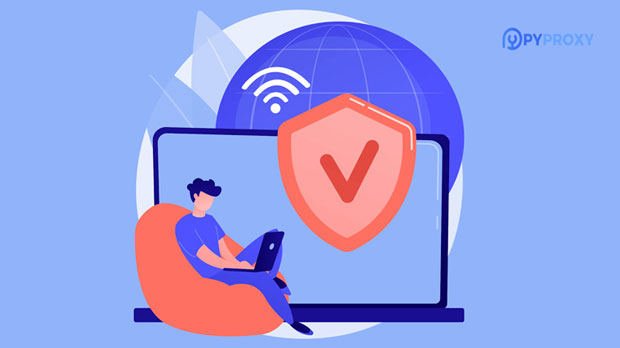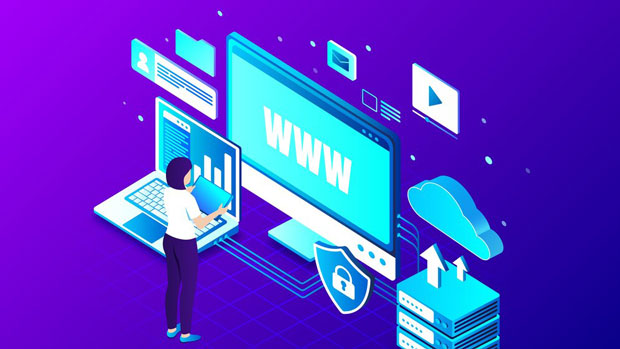In the world of web scraping, data collection, and automation, proxy management plays a critical role in maintaining anonymity, avoiding IP bans, and ensuring smooth, uninterrupted access to websites. PYPROXY is a popular Python library designed to handle proxy rotation, and using a proxy static feature within PyProxy can offer various advantages. Proxy static allows the user to keep a fixed IP address, reducing the chances of blocking while still ensuring anonymity and faster response times. This article explores the key benefits of using static proxies in PyProxy, diving into aspects such as reliability, security, and scalability, providing deep insights into why this approach is particularly valuable for businesses and developers alike. 1. Introduction to Static Proxies and PyProxyWhen dealing with large-scale web scraping or automating repetitive tasks, proxies are essential for bypassing geo-restrictions, overcoming rate limits, and staying anonymous. Static proxies are a type of proxy where the same IP address is used for a prolonged period, unlike rotating proxies, where the IP address changes frequently.PyProxy is a Python library that facilitates proxy management for web scraping, web automation, and other similar tasks. With its ability to handle proxy rotations and management seamlessly, PyProxy also allows users to set up static proxies for use in scenarios where stability and predictability are key. 2. Stability and ConsistencyOne of the primary advantages of using proxy static in PyProxy is the enhanced stability it provides. Static proxies ensure that your connection remains consistent, which is particularly beneficial for long-term web scraping projects. When a user needs to make repeated requests to a specific site, having a fixed IP address ensures that those requests do not look suspicious to the target website.Moreover, static proxies can reduce the chances of encountering CAPTCHA challenges or IP blocks. Unlike rotating proxies, where IP addresses are frequently switched, static proxies help to maintain a "natural" pattern of behavior. For websites that are sensitive to changes in IP addresses, static proxies can be a more reliable option.3. Reduced Risk of IP BlocksWebsites often block or blacklist IP addresses when they detect unusual behavior, such as making numerous requests within a short time frame. This is a common issue for developers and businesses relying on automated scraping or data collection. While rotating proxies are designed to mitigate the risk of IP bans, they sometimes trigger suspicions as their IP addresses change constantly. On the other hand, using static proxies significantly reduces this risk. Since the same IP address is used consistently, it is less likely to be flagged for suspicious activity.4. Enhanced PerformanceAnother notable advantage of using static proxies with PyProxy is the potential for improved performance. Static proxies are more likely to be cached and recognized by the target server. This can result in faster response times, as the website is less likely to treat the incoming requests as new or unknown, which is often the case with rotating proxies.Static proxies can also reduce the load time of a website or server because they have established a consistent communication channel with the server. This ensures that requests are handled faster and more efficiently, which is crucial when working with high-frequency data scraping or automation tasks.5. Security BenefitsIn terms of security, static proxies can be beneficial as they help establish a more secure and private browsing experience. With static IPs, users can more easily detect potential threats or attacks, as they can track and monitor any unusual or suspicious behavior on the fixed IP address. By using a static proxy, businesses and developers can take control of their security protocols and better manage their online presence. Static proxies are typically easier to configure with secure encryption settings, providing an added layer of protection against data theft, unauthorized access, and other security risks.6. Ideal for Long-Term ProjectsStatic proxies are ideal for long-term projects that require consistent access to the same websites or web applications. In scenarios where a user needs to scrape or interact with a site over an extended period, using a static proxy helps ensure that the user does not run into issues such as IP bans or CAPTCHA requests due to rapid IP switching.For example, in e-commerce price tracking, real estate data collection, or any industry where long-term data collection is essential, static proxies provide a stable, long-term solution. The ability to retain a fixed IP makes static proxies the best choice for projects where continuity and predictability are paramount.7. Better Geo-Targeting for Business ApplicationsGeo-targeting is a critical aspect for businesses that need to access region-specific content, be it for competitive analysis, market research, or local SEO strategies. With static proxies, it’s easier to maintain a consistent location. This means that businesses can appear as if they are accessing a website from a particular country or city, allowing for more accurate regional targeting.For example, if a business is scraping pricing data from multiple local competitors in a specific country, using a static proxy ensures that the location-based data remains consistent over time. This is especially important for SEO and market research projects where accurate location-based data is needed to understand local market trends.8. Cost-EffectivenessAlthough the cost of static proxies can sometimes be higher than rotating proxies, they can prove to be more cost-effective in the long run. With static proxies, businesses do not need to worry about constantly managing or changing IP addresses, which can be time-consuming and labor-intensive. Additionally, static proxies often result in fewer IP bans and CAPTCHA challenges, meaning businesses can avoid spending additional resources on solving these issues.For businesses that need to scrape data on a regular basis, the long-term benefits of using static proxies in PyProxy can outweigh the initial investment.9. Scaling and CustomizationAnother advantage of static proxies is the ability to scale and customize your proxy network. Static proxies allow businesses to have greater control over the number of proxies they are using and can create a highly personalized setup for their specific needs. For large-scale operations, this control can be crucial in managing resources effectively.PyProxy allows users to easily integrate static proxies into their existing systems, ensuring smooth operation as businesses scale. By using static proxies, businesses can maintain better control over their online activities and tailor their web scraping and automation workflows to meet specific business goals.10. Conclusion: When to Use Static Proxies in PyProxyStatic proxies in PyProxy offer several advantages, including enhanced stability, reduced risk of IP blocks, improved performance, and better security. These benefits make static proxies particularly valuable for businesses and developers working on long-term projects, high-frequency scraping, or tasks that require consistent, predictable results.While static proxies may not always be the best choice for every scenario, they are ideal for applications that require a stable and continuous connection, such as e-commerce data scraping, market research, and competitive analysis. By leveraging the power of static proxies in PyProxy, businesses can ensure that their web scraping and automation efforts are more efficient, secure, and cost-effective.
Sep 22, 2025


































































